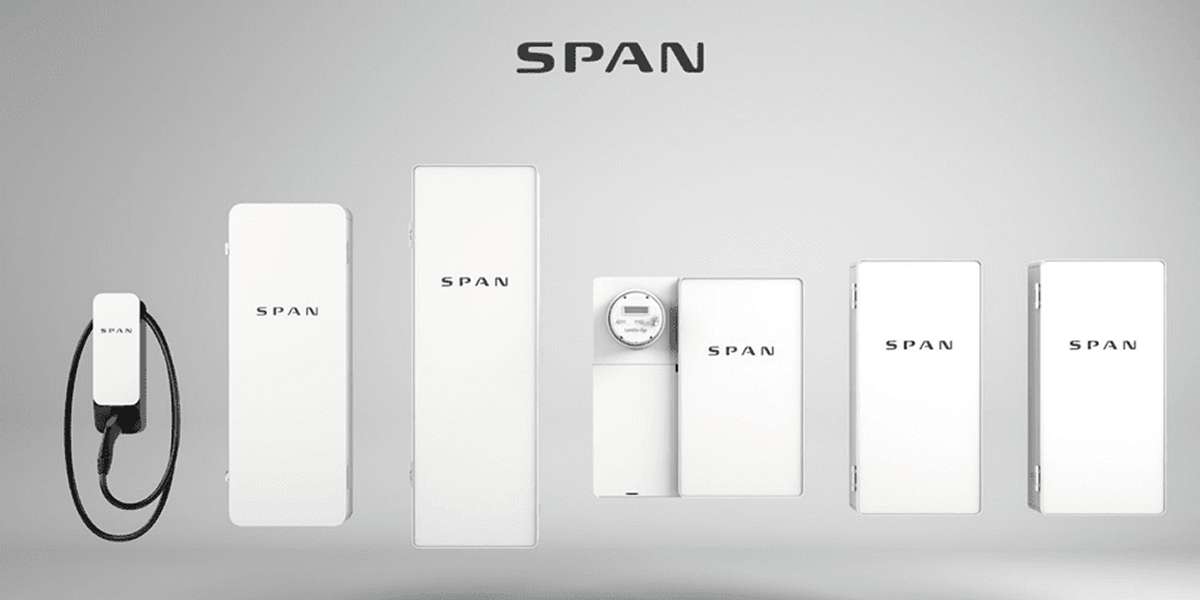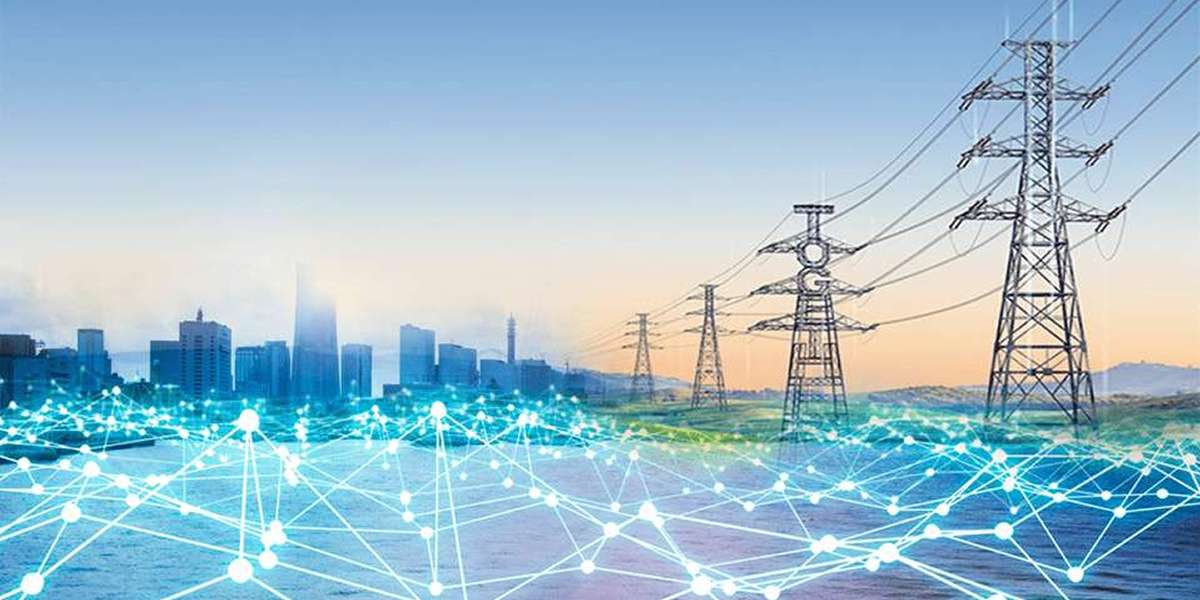- Published On:
Exploring Microgrids: Understanding Their Role
in Modern Energy Infrastructure
Microgrids are revolutionizing the current energy system because they provide an efficient, safe, reliable, and sustainable energy supply. Unlike conventional grid-connected structures, they can operate in parallel to the main grid to supply power at any time of the day or in isolation during natural disasters like power outages or severe weather. Also, they use solar and wind energies, which are cheaper as compared to coal and other non–renewable sources. Thus, these grids can add value to the power industry by enhancing energy security and reliability as a result of the demand for renewable power. Also, microgrids are a good option for hospitals, data centers, military bases, and similar structures that require uninterrupted power supply.
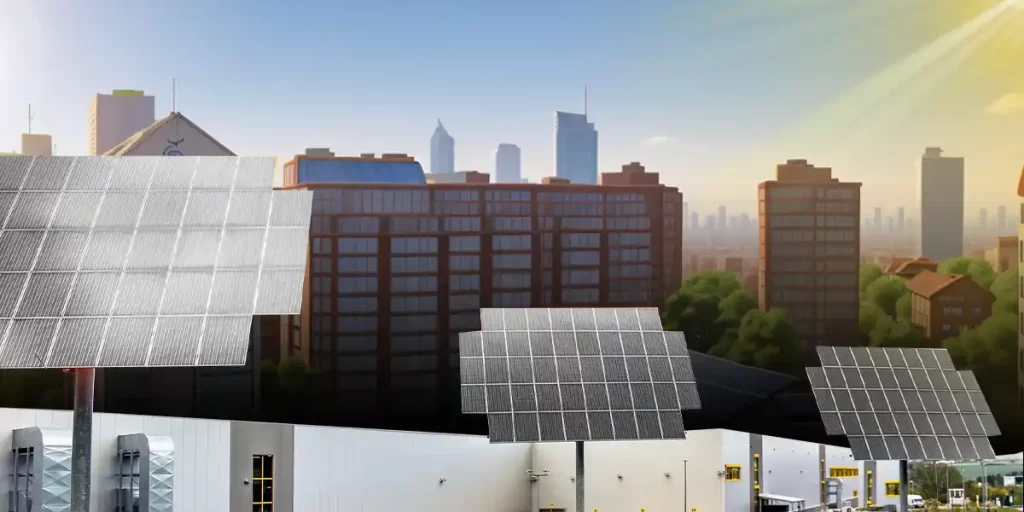
In this article, we will explore the advantages and applications of microgrids and why microgrids are essential for a cleaner and more resilient energy future.
What is a microgrid?
A microgrid is a small self-contained energy system that can operate in off-grid and on-grid modes. These grids utilize energy from solar panels, battery storage, backup generators, or wind tribunes. Microgrids can power up homes as well as commercial buildings or towers etc. Also, they can switch between islanded mode or in parallel with the main power grid. Such grids are important for a sustainable energy future as they reduce carbon emissions, boost energy resilience, and deliver continuous power supply.
What is a microgrid controller?
A microgrid controller is a device that can monitor and control connected loads and energy resources. Through the least-cost dispatch of assets, it will save operating costs while maintaining local grid stability. Moreover, a microgrid can detect its energy requirements with an energy management system and adjust to changing conditions with a real-time power management system. In an emergency, it can quickly analyze the situation and ensure that the energy produced and consumed is balanced. They are a reliable and effective option for sustaining resilience and stability in the energy system due to their ability to supply power even in power outages.
How do microgrids work?
Although most areas with grid connections maintain constant power, other places especially isolated locations like islands don’t have this infrastructure. For such places, an isolated microgrid makes sense. It can operate independently or with the main grid, depending on energy sources for emergencies like storms. Energy communities frequently use this strategy to stay self-sufficient by utilizing locally produced energy. Adding solar panels and battery storage to a rooftop increases output and self-sufficiency while ensuring constant power supply.
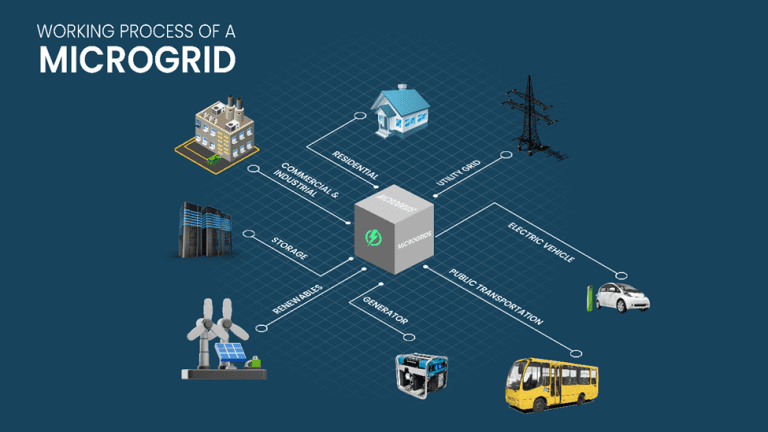
What are the benefits of building a microgrid?
Building such infrastructures offers several benefits to communities as it can work independently in case of power outages or bad weather conditions. The reasons for building microgrids include:
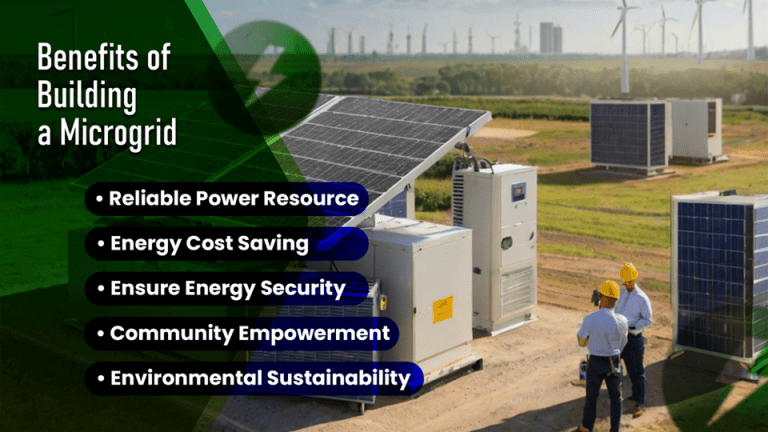
Reliable Power Resource
Enhanced energy reliability is a major advantage as it can operate in parallel or a standalone mode with the main electricity grid. Especially during the outage or disruption of the central grid, microgrids can keep supplying electricity to important facilities such as health care facilities, schools, and emergency services. This makes such grids very useful in areas where natural disasters occur.
Energy Cost Saving
Microgrids reduce energy losses and contribute to energy efficiency. These grids use solar panels, wind power, and batteries to boost power generation. This efficiency leads to reducing the overall cost of energy and also lower greenhouse gas emissions.
Ensure Energy Security
By decentralizing power generation and diversifying energy sources, building these grids improves energy security. Communities having microgrids are less vulnerable to long power outages or malfunctions in the primary grid. In addition to enhancing resilience against disruptions, local control over energy production and distribution guarantees an ongoing supply of electricity in times of emergency.
Community Empowerment
Communities get more control over their energy resources. They can make well-informed decisions on resilience plans, pricing, and energy usage according to the energy needs. This also promotes sustainability, self-sufficiency, and community resilience.
Environmental Sustainability
How to manage a microgrid system?
A Power Management System (PMS) is essential for management. To maintain grid stability, it determines and implements the best power distribution across assets, controls black start capabilities, and offers services like frequency and voltage support. To efficiently plan operations, the PMS utilizes real-time data and projections, including weather predictions. This is enabled by an Energy Management System (EMS), which simulates asset activity and provides operational plans. The microgrid maximizes financial benefits and provides power during disruptions to the grid.
What are the differences between on-grid and islanded microgrids?
The connection to the primary electrical grid is the main distinction between off-grid and on-grid microgrids. Off-grid microgrids are independent power sources that function individually and are built in remote locations where it is not cost-effective and accessible to connect with the main grid.
On-grid microgrids, on the other hand, are linked to the main grid. In addition to supplying the grid with extra power during peak hours, they can send excessive power back to the grid through solar net metering. Integrating on-grid microgrids requires a proper design to prevent disruptions.
Is my home energy system equal to a microgrid?
While your in-house power system is a microgrid, it is not the same as a community microgrid in terms of scale, energy sources, and complexity. It is designed for a single building or small group, using limited energy sources and meeting needs, whereas a community microgrid facilitates multiple buildings, integrates various energy sources, and requires complex management. These distinctions impact the microgrids’ capacity to offer resilience and network support.
Concluding all, microgrids offer centralized and reliable power solutions. By reducing the impact of outages and relying less on central grids, they improve energy security. Microgrids that combine renewable energy sources like solar and wind are contributing to a clean and sustainable energy future. Communities need to shift to a greener, more efficient energy system, increase grid stability, and become more energy-independent by building microgrids.
Related Articles:
With the growing trend of solar energy, people are now looking for more efficient ways of utilizing energy.
The smart grid is a modern development of a traditional electrical grid. This new system uses digital technologies to connect the power utilities and the consumers.
Solar panel technology is entering a new era, driven by innovative breakthroughs transforming the energy landscape.

